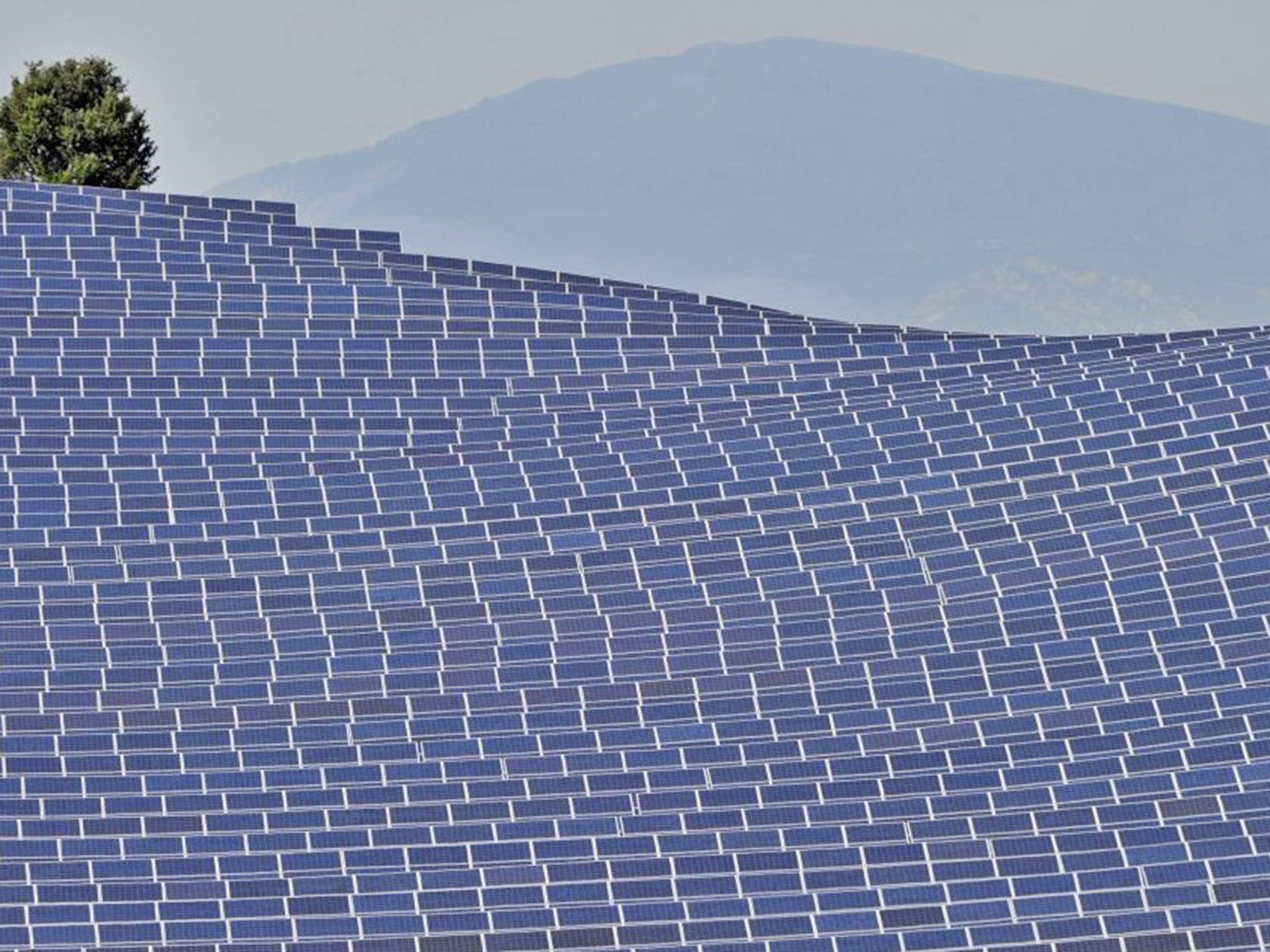Nature Studies: For all the attractions of solar power, it shouldn’t blight the countryside
It's a terrific energy source, but that doesn't mean it should ride roughshod over every other environmental consideration

Your support helps us to tell the story
From reproductive rights to climate change to Big Tech, The Independent is on the ground when the story is developing. Whether it's investigating the financials of Elon Musk's pro-Trump PAC or producing our latest documentary, 'The A Word', which shines a light on the American women fighting for reproductive rights, we know how important it is to parse out the facts from the messaging.
At such a critical moment in US history, we need reporters on the ground. Your donation allows us to keep sending journalists to speak to both sides of the story.
The Independent is trusted by Americans across the entire political spectrum. And unlike many other quality news outlets, we choose not to lock Americans out of our reporting and analysis with paywalls. We believe quality journalism should be available to everyone, paid for by those who can afford it.
Your support makes all the difference.If one were to draw up a list of the most benign technologies ever invented, it seems obvious that solar power would be near the top.
Electricity produced merely by the action of sunlight falling on a silicon panel seems to be drawback-free – no moving parts to go wrong, no combustible materials and most important of all, no harmful emissions of noxious gases to damage human health, or wreck the Earth’s atmospheric balance. If we are to meet our commitments to deal with climate change through the switch to renewable energy, solar will be more necessary than ever.
Yet the recent runaway expansion of the technology in Britain is now clashing headlong with nature protection in a key case in Dorset, which ultimately involves high stakes, concerning a solar farm – a concept that did not exist in the UK until five years ago.
You probably think of solar power as generated by photovoltaic panels fixed to rooftops, both of houses and of large commercial buildings, and that indeed is how most of it is produced; there are more than 600,000 such installations in Britain now and the total will no doubt soon surpass a million.
From 2010, however, when the Government introduced generous grants to boost the technology, it began to be deployed in a new way: entrepreneurs quickly realised that very extensive arrays of solar panels fixed to the ground in fields could take advantage of the grants on a large scale, and thus be extremely profitable. The resultant expansion of so-called solar farms has been astonishing.
According to the Renewable Energy Map, a website run by a database specialist from Kent called Simon Mallett – a wonderful resource for anyone interested in alternative energy – there was one solar farm in Britain in 2010; 57 in 2011; and the current total stands at 296 solar farms connected to the grid. A further 90 have planning permission or are being built, and another 116 have been proposed.
Some of these installations have aroused opposition because they can take up a lot of land in the countryside and the dark mass of panels replacing green fields can be considered unsightly. To produce a megawatt of electricity needs about 2.5 hectares of panels, so to match the capacity of an average turbine in an onshore wind farm – three megawatts – you need 7.5 hectares, or 20 acres; to match five wind turbines, you need 100 acres. The Conservative part of the Coalition does not like solar farms any more than it likes wind farms, and is slashing the grants.
But what is important about the case in Dorset of the 24-megawatt solar farm proposed for Rampisham Down, north-west of Dorchester, is not so much its impact on the landscape – although that is a consideration, because the site is part of the Dorset Area of Outstanding Natural Beauty – as its effect on the local ecology.
Rampisham Down has never been put to the plough: it is one of the largest remaining sites of what is now a very rare habitat – lowland acid grassland. It has an unusual mosaic of plants and has been declared a Site of Special Scientific Interest by Natural England, the Government’s wildlife agency. Natural England strongly objected to the proposal when it came up before West Dorset District Council, as did the Dorset Wildlife Trust, and indeed, the council’s own planning officers, who recommended rejection, pointing out that the proposal went against the National Planning Policy Framework: yet two weeks ago the council’s Development Control Committee voted it through.
I asked the committee chairman, Councillor Ian Gardner, what the vote was, and he said he did not know. Not quite understanding, I asked him to explain, and he said the figure had not been recorded, although it was definitely a majority in favour. “That’s just the way we do things down here,” he said. (He himself had voted against, he added.)
It is now up to Natural England, and the Dorset Wildlife Trust, and other interested parties, to ask the Communities and Local Government Secretary, Eric Pickles, to “call in” the decision and have another look at it.
It is important that they do, and that he does. Solar power is terrific, and we greatly need it, but that does not mean that our need for it has to ride roughshod over every other environmental consideration. The issue is one of statutory environmental protection: is a wildlife site with a double governmental defence, being a declared Site of Special Scientific Interest within a declared Area of Outstanding Natural Beauty, protected – or isn’t it?
If it isn’t, Mr Pickles, we need to know, and make our dispositions accordingly.
Join our commenting forum
Join thought-provoking conversations, follow other Independent readers and see their replies
Comments